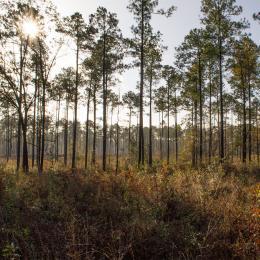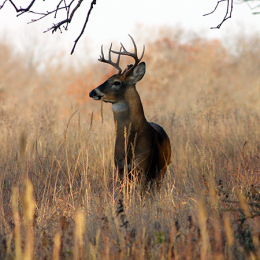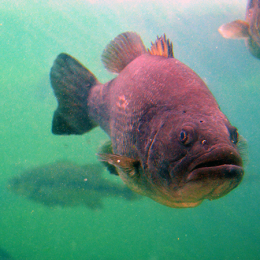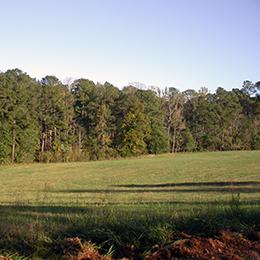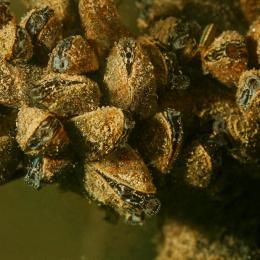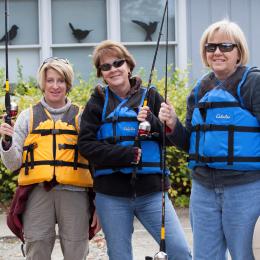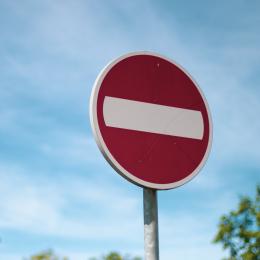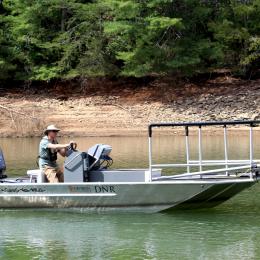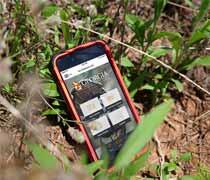
- Georgia Trout Slam
- Trout Stream Destinations
- Trout Stream Interactive Map
- Accessible Trout Fishing Sites for Anglers with Disabilities
- 2025 Trout Stocking Frequencies
- Sign up for Trout Stocking Updates
- Weekly Stocking Report: Dec. 11-12, 2025
NOTE: If the report doesn't show the current week, clear your browser's cache and viewing history and re-click the link.
Trout fishing is an important part of the state’s fishery resource in terms of the outstanding recreation provided and significant economic benefits. The economic impact of trout fishing in Georgia is estimated to exceed $172 million annually. The American Sportfishing Association also determined that trout fishing in Georgia generates $3.4 million in state sales tax and $2 million in state income tax. More than 100,000 trout fishing licenses are sold each year generating additional state revenue.
Trout management efforts in Georgia include annual population surveys, setting size and creel limits, protecting spawning habitat and water quality, and producing and stocking catchable-sized (9-11 inches) Rainbow and Brown trout.
- Trout Rearing and Stocking
Georgia has approximately 4,000 miles of trout streams. However, these streams present challenges to naturally occurring populations of trout due to calcium deficient soils. Therefore, to meet angler demands, stockings and special regulations are used on some streams to maintain acceptable catch rates.
Fun Fact! Did you know that rainbow and brown trout were both introduced into Georgia streams in the 1880s and have been stocked for over a century?
Thanks to a successful partnership between the Wildlife Resources Division and the U.S. Fish & Wildlife Service, 160 streams can be stocked with rainbow, brown and brook trout from late March through October (learn about DNR trout hatcheries). Trout are first obtained as eggs or four-inch fish and then grown to catchable size at three state hatcheries and one federal hatchery prior to stocking.
Trout Fishing and Role of Hatcheries Information Sheet
The number of trout stocked, and the stocking frequency depend on a stream's fishing pressure, accessibility, and water conditions. In general, streams on public lands are stocked more often and with greater numbers of trout. Read about our 2025 Trout Stocking Frequencies for more information.
- Trout Fishing Opportunities
Trout fishing opportunities vary and include heavily stocked, high-use streams (better for beginners), wilderness streams, streams with special regulations, and small impoundments. Some "special regulation" streams offer trophy or catch-and-release fishing opportunities.
Anglers age 16 or older must have a fishing license and a trout license. Both can be purchased at GoOutdoorsGeorgia.com.Using Catch and Release? Here are some tips on releasing fish.
Respect private property. Many trout streams are located on private property. It is your responsibility to know when you cross a property line. Always obtain permission from the landowner before entering or fishing on private property.
Special Regulation Trout Streams:
The following trout streams have special regulations. Click on the link to learn more before fishing:- Artificial Lures Only: Chattahoochee River, Coleman River, Conasauga River, Hoods Creek, Jones Creek, Mountaintown Creek, Noontootla Creek, Stanley Creek, Walnut Creek
- Delayed Harvest Streams (Special: Early Season DH Tips):
- Age Restriction: Moccasin Creek
- Trophy Trout: Smithgall Woods-Dukes Creek
Recommended Trout Fishing Locations:
- Noontootla Creek Watershed: This watershed offers high-quality fishing for wild brown and rainbow trout, with many tributaries offering a chance at wild brook trout. Both Noontootla and its tributaries are managed under an artificial lure-only regulation and have a 16” minimum size limit.
- Dukes Creek: This stream, located on the Smithgall Woods-Dukes Creek Conservation Area, offers year-round trout fishing by reservation (706-878-3087). All fish caught must be released immediately and anglers can only use artificial lures with barbless hooks. The stream offers a great chance at a potential trout over 20 inches, so bring your camera. The best time to fish is after rain, which reduces water clarity and increases trout feeding activity.
- Chattahoochee River: For trout fishing close to metro Atlanta, the Chattahoochee River downstream of Buford Dam offers diverse fishing opportunities, from stocked rainbow trout to trophy wild brown trout. The Chattahoochee River National Recreation Area parks offer good bank, wading and boating opportunities. An artificial-only section exists from Buford Hwy. (Hwy 20) to Medlock Bridge. The best fishing conditions are low flow when the river is clear to slightly stained.
- Toccoa River: Downstream of Lake Blue Ridge Dam, the Toccoa River is an excellent destination for both new and seasoned trout anglers because of its high catch rates. Rainbow and Brown Trout are stocked annually in the Toccoa. The majority of trout caught will be in the 8 to 12-inch range, but anglers should be ready for a memorable trout over 20 inches.
- Tallulah River: This very popular river is stocked frequently from mid-March to early September as it receives substantial angling pressure.
- Johns Creek: This Floyd County stream is easy to access and consistently stocked.
- Cooper Creek: This stream, located on Cooper Creek WMA, has several large pools to throw a hook into, and plenty of places to camp, making it a great area for a family weekend.
- Trout Fishing Tips And Resources
What you need: Keep it simple. Bump salmon eggs, corn, worms or crickets slowly along the bottom of pools. An ultralight spinning or spincast outfit spooled with 4-pound-test monofilament, a small hook and a few BB-sized split shots are all the tackle you need. If you prefer to cast spinners, Panther Martins and rooster tails work great.
Where to go: Our Trout Stream Interactive Map is a great resource for helping you to locate a stream to fish at. Zoom in to north Georgia until you see yellow and pink highlighted lines. If you click on the “Legend” in the upper righthand corner, you will notice streams stocked in the last week are highlighted in Bright Yellow and streams stocked the week before (8-14 days ago) highlighted in a Sandy color. Also check out the info under “Trout Fishing Opportunities.”
Recommended Online Resources:
- Weekly Georgia Fishing Blog (Georgia DNR)
- Angler Management Blog (Unicoi Outfitters)
- Rabun Trout Unlimited website
- Protect Trout Waters
Trout need clean, cold water to survive and reproduce. Erosion and sedimentation are the greatest threats to successful trout reproduction. Sediment entering the water settles and prevents oxygen rich water from reaching trout eggs.
Georgians can be good trout managers by using proper land use practices. Trees and shrubs left along stream banks provide shade to keep water temperatures cold while their root systems help stabilize stream banks and prevent soil from washing into the stream and smothering trout eggs and aquatic insects. Stormwater run-off from paved parking lots allows heated water to flow into trout streams. Taking measures to keep soil in its proper place and maintaining a 50-feet wide vegetated buffer zone along each bank of trout streams will adequately protect Georgia’s trout resources for future generations to enjoy.
- Trout Reproduction In Georgia
Natural reproduction of brook, brown, and rainbow trout occurs in approximately 2,800 of Georgia’s 4,000 miles of trout streams. About 150 miles of streams support native brook trout. Since brown and rainbow trout have naturally reproduced in Georgia for many years, the Georgia Department of Natural Resources classifies them as naturalized species.
To survive, trout require continuously flowing, well oxygenated (above 6 milligrams per liter), and cold water (water temperatures less than 72oF). For spawning, trout require streams with gravel bottoms. When the water temperature approaches 50oF, females search for suitable habitat to lay eggs. She makes a shallow depression in the gravel, called a redd, to deposit eggs. Young females deposit 200 to 500 eggs, but larger fish may produce 2,500 eggs or more. After the female deposits her eggs, one or more males deposit milt (sperm) over the eggs to fertilize them. After eggs are fertilized, the female gently sweeps gravel over the eggs with her tail to protect them while they incubate. The eggs hatch in 30 to 45 days, depending on water temperature, but may not emerge from the gravel for several more weeks. Brown and Brook trout spawn in October and November, whereas Rainbow trout spawn in the spring.
After hatching, trout fry first survives on the nourishment contained in a tiny yolk sac until they can catch their own food. Their first solid food is usually zooplankton but will later include a variety of organisms including aquatic insects, like mayflies, caddisflies, and stoneflies; fish, crayfish, and even terrestrial insects, like ants and spiders that fall into the water.
Wild trout may reach 4 inches in length by the end of their first year, 6-inches in second year, and 8 to 9-inches long in their third year.
From a single nest of eggs, less than 10% will likely survive to maturity, and wild trout seldom live beyond three years. The current Georgia trout state records reflect the ability of some trout to live well beyond age 3 under ideal habitat conditions and with an abundance of food.
- Support Trout Management In Georgia
Buy a Fishing License: Your license purchase allows Georgia WRD to do important research, maintain and operate public fishing areas and more. Purchase a Georgia license at GoOutdoorsGeorgia.com.
Buy a License Plate: The Trout license plate supports Georgia’s trout conservation and management programs positively impacting trout production, stocking and stream restoration throughout north Georgia. More info at GeorgiaWildlife.com/licenseplates.
Go trout fishing: Creating and sharing memories with loved ones helps sustain this pastime for years to come.







